Quick links
About this guide
The general capabilities are embedded within specific learning activities and can be identified with the following icons:
The general capabilities are embedded within specific learning activities and can be identified with the following icons:
Tardigrades… perhaps you’ve heard of them? Small but mighty, they have withstood multiple extinction cycles, surviving boiling temperatures and the freezing temperatures of space. With a surprising cult following, some people call them ‘Water Bears’, others call them ‘Moss Piglets’.
Moss Piglet is an explosive portrait of the world’s most resilient and curious critters. Taking young audiences from jelly-filled petri dishes to the depths of a volcano to Arctic glaciers to the moon, the work explodes the mysteries of the wildly weird tardigrade.
Playful and thrilling, Moss Piglet is a work about how even the tiniest of things can be the strongest.
Director, Co-Creator
Clare is an award-winning director and theatre-maker. She was the Artistic Director of Black Swan State Theatre Company from 2016 to 2022. Previously, Clare was Artistic Director at St Martins collaborating with children and teenagers. Her work has been presented by Malthouse Theatre, Melbourne Theatre Company, State Theatre Company South Australia, Sydney Theatre Company, Edinburgh Festival and Adelaide Festival among many others. Clare is a recipient of the Sidney Myer Performing Arts Award.
In 2023, she was appointed the Artistic Director of Windmill Theatre Company.
Co-Creator
Elena is an award-winning actor, writer and director based in Adelaide, South Australia. Elena has worked with State Theatre Company South Australia, Theatre Republic, Windmill Theatre Company, Brink Productions, Bell Shakespeare, Malthouse Theatre, Flying Penguin, Belvoir and Sydney Theatre Company among many others.
Her plays have been presented by State Theatre Company South Australia and Yira Yaakin. In 2023, she was a Story Consultant with Highview productions, where she wrote and directed her first short film, Blame the Rabbit.
Performer, Co-Creator
Gareth is a performer, writer and theatremaker based in Sydney. He has performed with Belvoir, Sydney Theatre Company, Malthouse Theatre, Windmill Theatre Company, Bell Shakespeare and Griffin Theatre Company among many others. He is a founding member of Black Lung Theatre and has toured works nationally. His screen credits include The Daughter (Screen NSW/Fate Films), The Letdown (Giant Dwarf/ABC), Hunters (Universal Cable/Valhalla) and Peter Rabbit (Animal Logic).
Performer
A graduate of Adelaide College of the Arts, Dylan has worked with State Theatre Company South Australia, Windmill Theatre Company and Sydney Theatre Company. In 2019 he toured internationally with The Secret River. In 2023, he played a lead role in Windmill Theatre Company’s Hans and Gret, as part of the Adelaide Festival. In 2024, he toured with the company’s award-winning production, Grug nationally.
Designer
Meg Wilson is an Adelaide-based interdisciplinary artist and designer. Works include State Theatre Company of South Australia’s Terrestrial (2018), Euphoria (2021), Eureka Day (2021) and Windmill Theatre Company’s Amphibian (2018) and works extensively with Vitalstatistix, Patch Theatre (Lighthouse, AF 2020) and Restless Dance Theatre’s Intimate Space and Guttered (2021). Her GreenRoom award-winning work SQUASH! premiered with Arts House during the Festival of Live Art (FOLA, 2018). In 2018 she was a resident artist with Urban Theatre.
Composer, Sound Designer
Luke creates highly detailed soundtracks for theatre, dance and film, working across all areas of music composition, sound design, foley and sound effects editing. Various credits include: Carbon Field (Queensland Ballet), ʻGʼ (Australian Dance Theatre), Glow (Chunky Move), Roadkill, The Ninth Wave (The Farm), Split Second Heroes (Gabrielle Nankivell), SURGE (Dancenorth), The Maids (Sydney Theatre Company), Wildebeest, Neon Aether (Sydney Dance Company), Fugitive, School Dance and Girl Asleep (Windmill Theatre Co).
Michael Carmody is a Video and AV Designer and filmmaker. He has an extensive body of work with some of the Australia’s leading theatre companies including Black Swan Theatre Company, Sydney Theatre Company, Malthouse Theatre, St Martins Youth Art Centre, as well as collaborations with Angus Cerini and Julia Morris.
Beyond theatre, Michael’s short documentary Debutantes was an official selection at the Melbourne International Film Festival, Brisbane International Film Festival and Perth Revelation International Film Festival. In 2018 he won the Green Room Award for Design in Contemporary and Experimental Performance for For the Ones Who Walk Away.
Lighting Designer
Chris is a lighting and video designer from Adelaide. Chris has worked with renowned arts organisations in South Australia and beyond. Works include Light Cycles as part of Illuminate Adelaide in the Adelaide Botanic Gardens crafted by the world-leading studio, Moment Factory, Carla Lippis’ Mondo Psycho for WOMAD 2022, Theatre Republic’s How Not To Make It In America and Windmill Theatre Company’s Creation Creation.
Lighting Designer
Richard is a freelance lighting designer. He has lit productions for Melbourne Theatre Company, Sydney Theatre Company, Malthouse Theatre, Victorian Opera, Windmill Theatre Co, Arena Theatre Company, NICA, The Darwin Festival and Back to Back Theatre.
He has also designed the lighting for Stuck Pig’s Squealing, Chambermade, Rawcus, Red Stitch, Polyglot, Melbourne Worker’s Theatre, Aphids and many productions at La Mama Awards. Richard has won 5 Green Room Awards including the Association’s John Truscott Prize for Excellence in Design (2004). He has also been nominated for 8 other Green Room Awards.
Movement Consultant
Larissa McGowan is an award-winning Australian dancer and choreographer. An independent choreographer and movement consultant she was a longstanding performer and Associate Choreographer with Australian Dance Theatre (ADT) she is currently Associate Artist for Restless Dance Theatre. In 2003 she won the Green Room Award for Best Female Dancer and Best Female Dancer in a Ballet or Dance Work at the Helpmann Awards and the Australian Dance Award for Outstanding Performance by a Female Dancer in 2004.
Tardigrades are considered one of the most resilient of all creatures. They have withstood extreme environments across history and have survived all mass extinction events on record. Their ability to ‘tun’, to alter their insides and go into a deep sleep state, allows them to survive all sorts of conditions that we as humans, would not be able to endure. They are also tiny and don’t look strong, which is another reason why they are so cool! In the show Moss Piglet, the main character is taken through all sorts of physical and mental tests, and not only do they survive in-tact, but they continue to seek challenges and yearn for adventure. A lot of children are like this, brave and strong but sometimes underestimated. Power doesn’t have to come from size. Small can equal resilience!
Moss Piglet is a tiny creature but when dropped into environments that are expansive, desolate, enormous or deep… they survive! There are lots of stories of small, unassuming characters coming up against giant, dangerous things and being triumphant. Why do humans love these stories so much? Because we like the underdog, we like to see the bully undermined, the untameable tamed, the unexpected hero emerge!
How are these ideas shown in storytelling? How do artists achieve these extremes of scale? How do they show a microscopic creature in an enormous environment, like a huge volcano or the widest and driest desert? Not only do we see these things, but we can also feel them. Moss Piglet overcomes a lot of adversity and that might make us feel small emotions or maybe big ones. We might learn a small fact or learn something that blows our minds. So scale does not just apply to creatures, objects, locations but also feelings and knowledge. How wonderful!
Aren’t volcanoes incredible? Mind blowing! Can you even imagine the deepest part of the ocean and what might be down there? How about a desert with a beautiful mirage! Can you believe that dinosaurs walked the planet or that the most resilient creature currently on Earth is less than 1.5mm long and as a species has survived for 600 million years?! The diversity of environments and living things is wonderful. It is also incredible how humans have the capacity to experience these places and to understand them. Moss Piglet shows us how just one tiny creature survives the gassiest, driest, deepest hottest and coldest of environments. Truly awe inspiring.
The design for Moss Piglet largely came about through a collaborative process. Actors, writers, the director, a technical whiz and creatives of many forms (lighting designer, sound designer, audio visual (video) designer and set, props, puppets and costume designer) all worked together in the same room. This was essential in the creation of an immersive and cohesive world that could sometimes be a scientist lab but also allow us to zoom into the tiny world of the moss piglet.
Our moss piglet character doesn’t say a lot that is understandable to our human ears. So, in thinking about portraying characteristics of the moss piglet (or tardigrade, as they are scientifically known), we decided to demonstrate how resilient the moss piglet is by subjecting it to a series of scientific experiments. Resilience means the ability of the moss piglet to recover quickly from difficult situations and can also be described as toughness. The process of creating the vocabulary of the design elements naturally involved referring to a lot of action adventure and sci-fi movies, such as Cliffhanger, The Matrix and Dune as well as found footage on YouTube of rocket launches and snow avalanches.
Action superheroes and sports kit influenced our costumes. Our moss piglet puppets and human-size jacket are made from ripstop – a material commonly used in parachutes, kites and sporting tracksuits. As our scientists also had to be quick on their feet, they are also wearing bright green tracksuits under their scientist jackets and bright orange sneakers to help them run and dance quickly around the set. Their costumes and props were also influenced by a 1950s and 1960s futuristic sci-fi aesthetic. This is sometimes known as the Atomic Age design which featured abstract organic shapes incorporated into fashion, interior design and architecture of the time and was highly influenced by science and space travel.
Another reason for the green tracksuits is that we use green screen effects as part of the live action. Green screen technology allows us to disappear anything that is green when we film in front of a green wall (or screen), like you see as part of the Moss Piglet set. This means that when this footage is played back, we can make it look like the actors are in lots of different locations and we can play tricks like making it look like objects are floating in space!
The green screen technology was one of the first techniques that we experimented with in the creation of the Moss Piglet story. We played with lots of playful techniques and effects as part of the making process. A lot of these effects made it into the show, such as: shadow puppetry, a rolling paper floor to make it look the moss piglet puppet was walking through a desert and perspective play with different sizes of objects and puppets in front of the camera. We had the aim of using techniques that we thought children would be able to try playing with themselves at home or at school.
– Meg Wilson, Designer
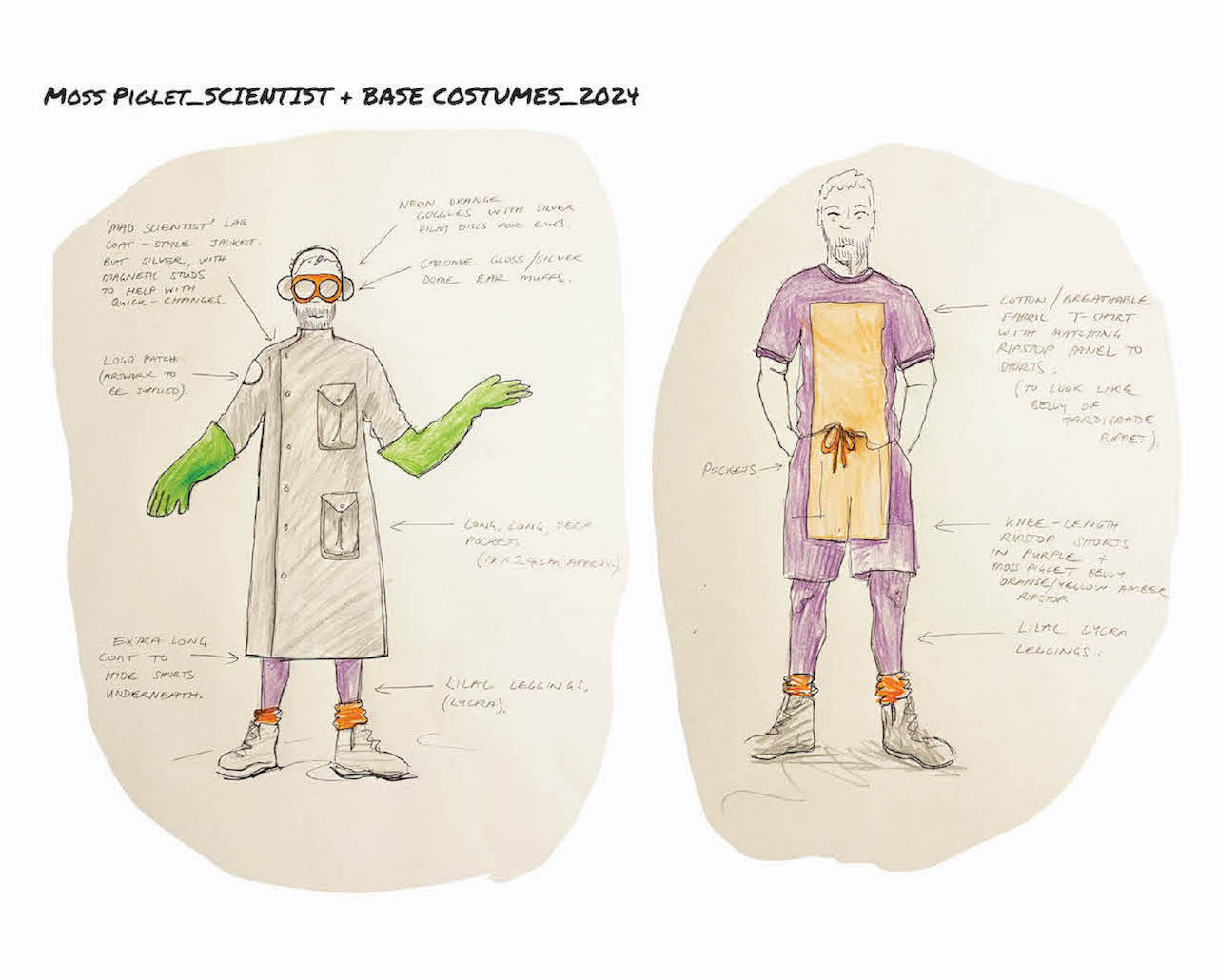
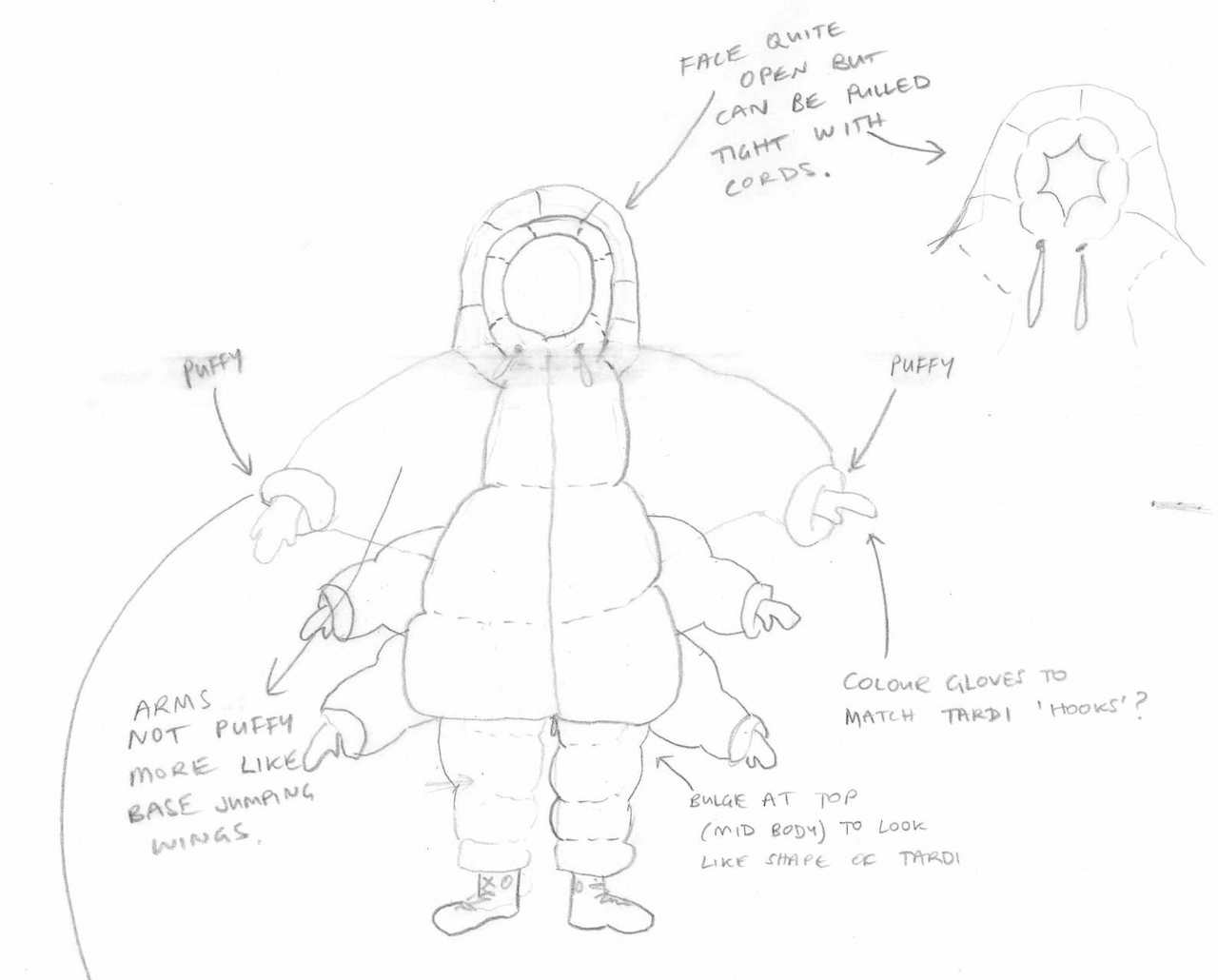
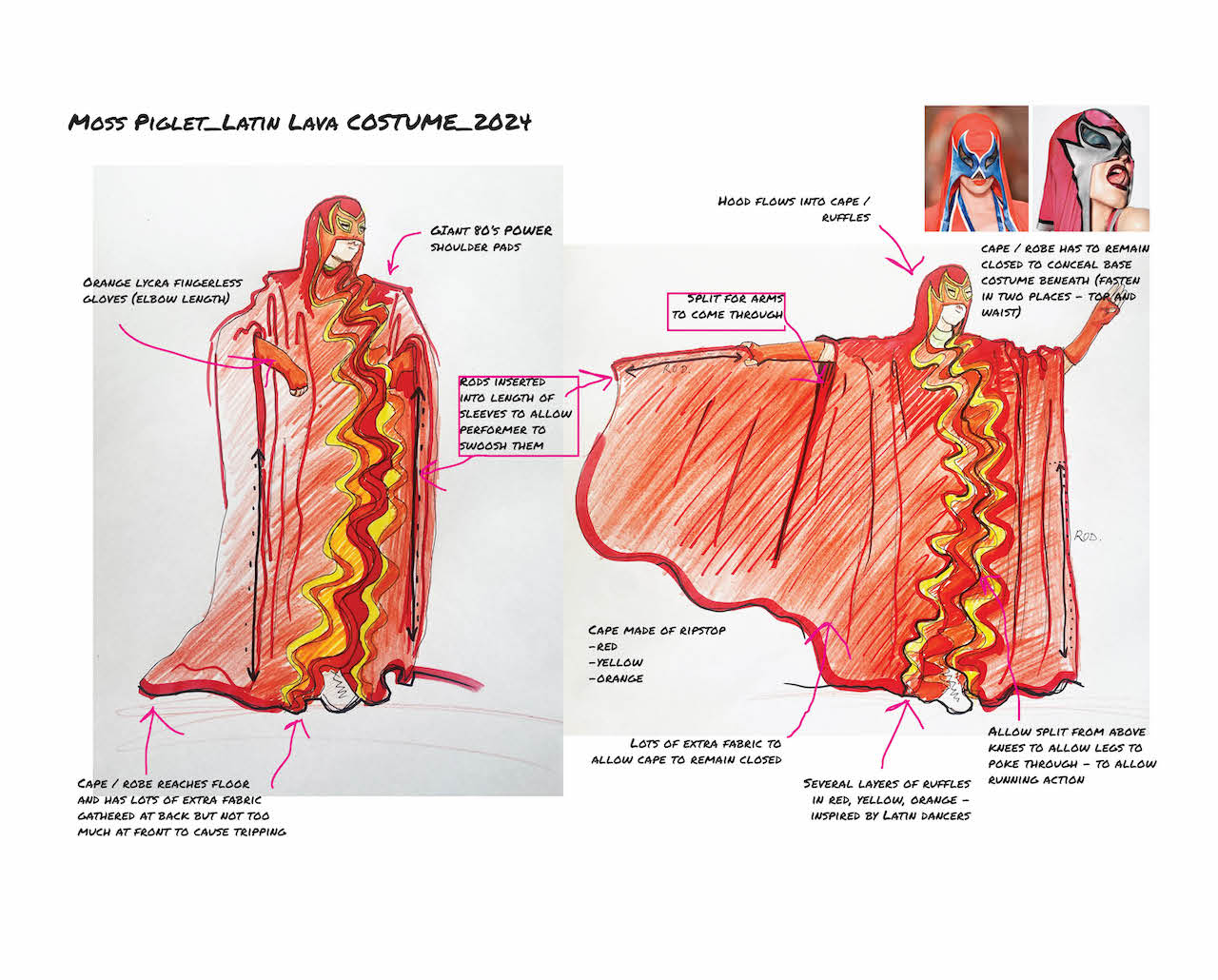
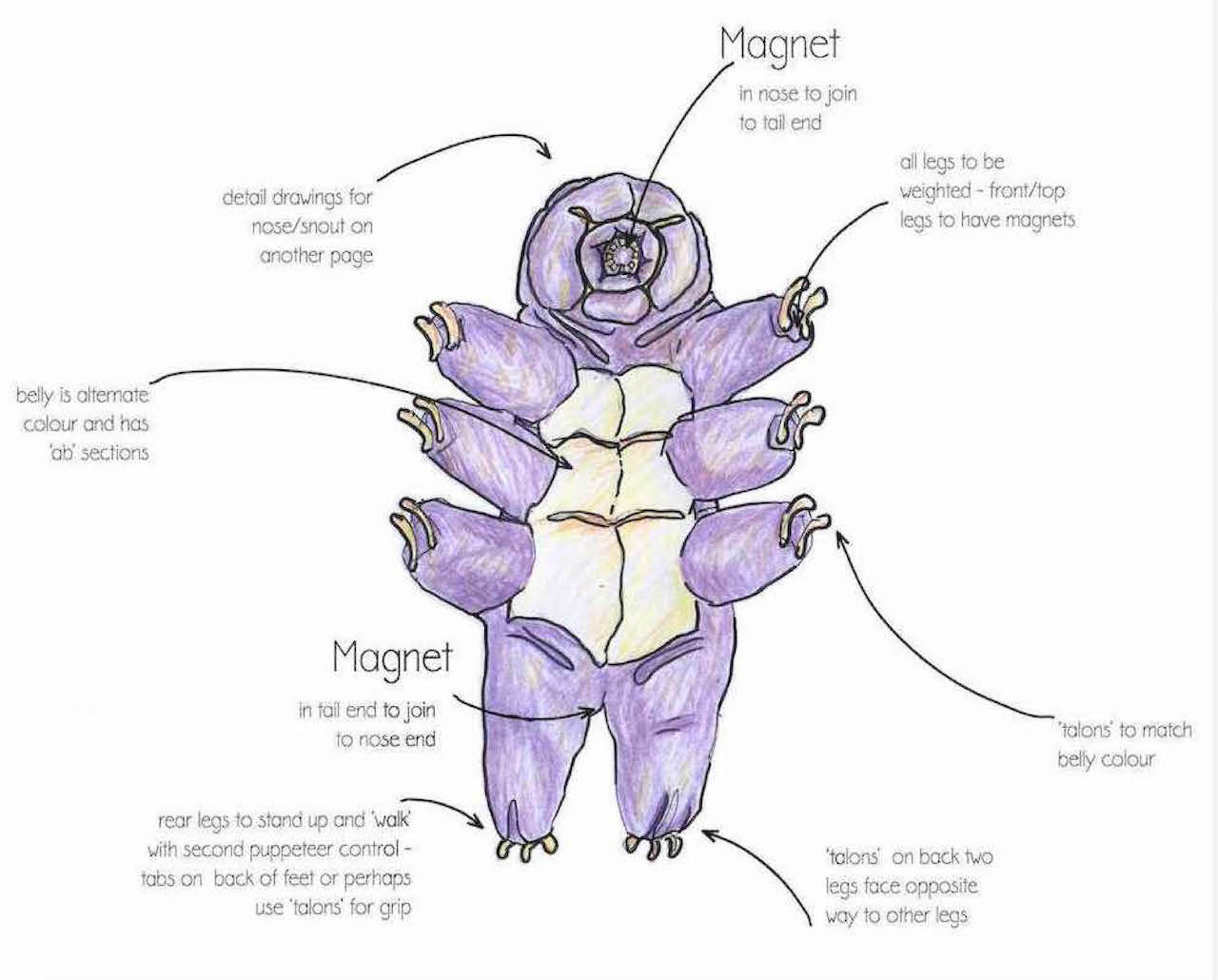
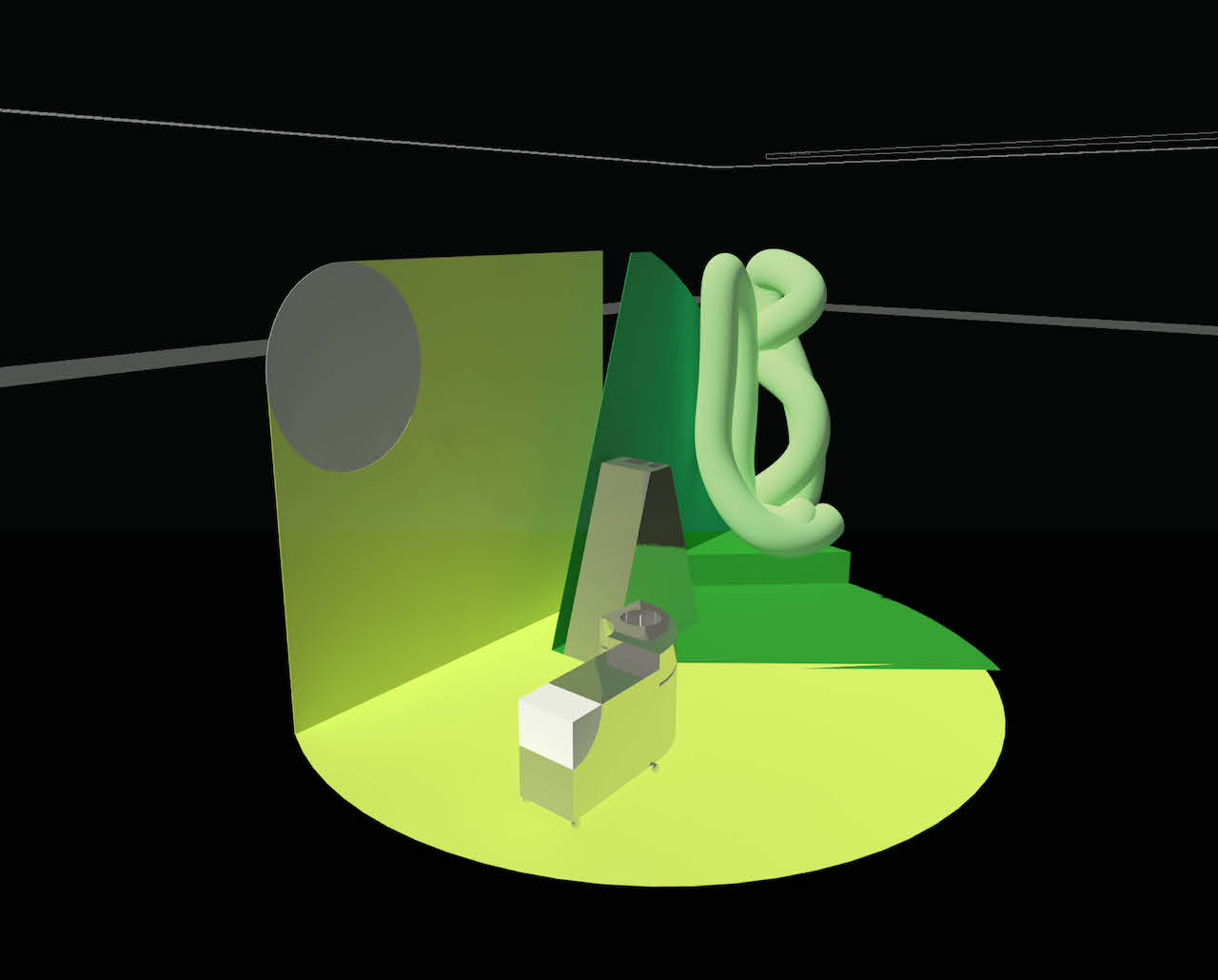

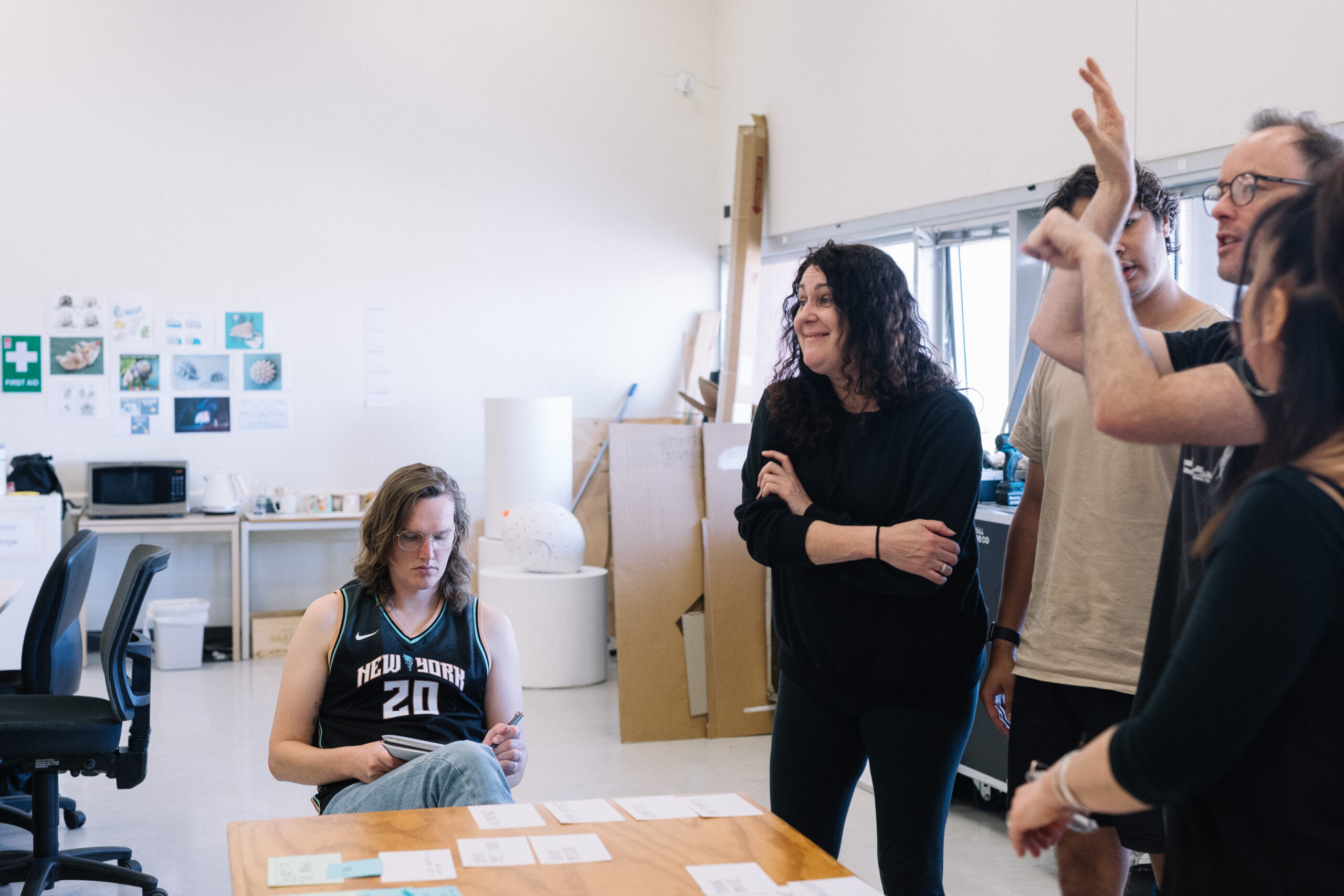
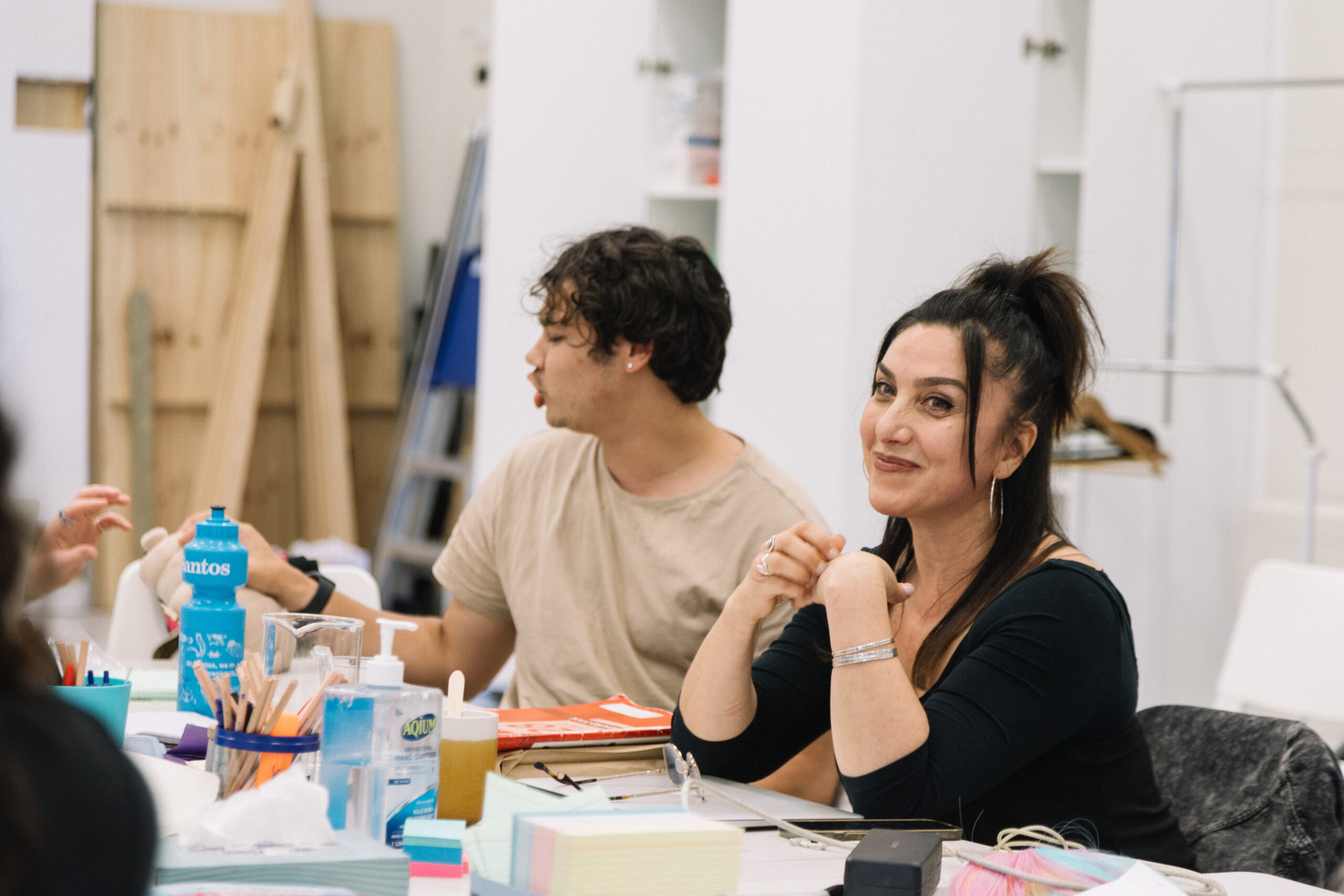


Students viewing live theatre can experience feelings of joy, sadness, anger, wonder and empathy. It can engage their imaginations and invite them to make meaning of their world and their place within it. They can consider new possibilities as they immerse themselves in familiar and not so familiar stories.
Watching theatre also helps students understand the language of the theatre. It is part of the holistic approach to developing student literacy.
While viewing the show, students’ responses can be immediate as they laugh, cry, question and applaud. After the performance, it is also extremely valuable to provide opportunities for discussion, encouraging students to analyse and comprehend how these responses were evoked by the creatives through the manipulation of production elements and expressive skills.
Before coming to see Moss Piglet with your students, explore the different roles involved in making a performance happen, from writing, directing and performing, to lighting, projection, set and costume design and construction.
Visiting the theatre is very exciting. There are some guidelines that students can follow regarding appropriate behaviour in the theatre and during the performance that will allow their visit to be even more memorable. Prior to visiting the theatre prepare students for what they will experience as an audience member using the following questions:
Where can you sit?
An usher (front of house – FOH) will help you find your seat so you need to follow their directions.
How do you know when the performance begins?
The lights will dim and/or you might hear a voice-over or sound. That’s your cue that it has begun and it is time to settle and be quiet.
How is going to the theatre different to going to the movies or watching television in your loungeroom?
Something unique to theatre is that it is ‘live’ and the actors are real. You can hear and see the actors, and they can hear and see you.
What is the relationship between the audience and the performers?
As the actors can see and hear you, your responses to the performance show your appreciation to the actors. So, show your enjoyment!
Final points to remember:
Avoid eating in the theatre and wriggling in your seat;
Cover coughs and sneezes;
Don’t film or photograph the performance due to intellectual ownership.
Produced by Windmill Theatre Co. Developed and compiled by Drama Education Specialist Astrid Pill and Windmill Theatre Co.
The activities and resources contained in this document are designed for educators as the starting point for developing more comprehensive lessons for this work.
© Copyright protects this Education Resource. Except for purposes permitted by the Copyright Act, reproduction by whatever means is prohibited. However, limited photocopying for classroom use only is permitted by educational institutions.
This resource is proudly supported by the South Australian Department for Education.